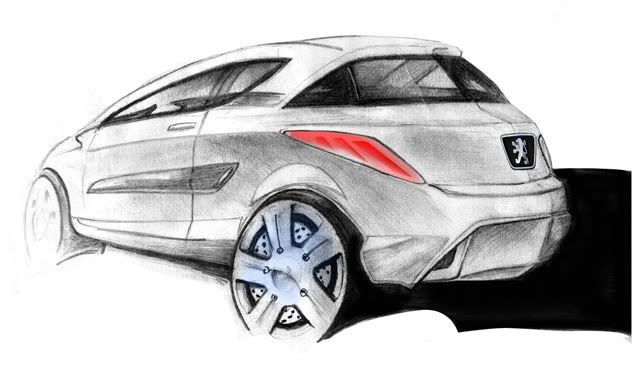- Space frame construction rather than monocouque ( this removes the need for expensive stamps and moulds) basically a spaceframe is like a matrix of metal welded together like a bycicle frame, this would tap into the ability of the local metal workers. monocouque chasis makes sense for large scale productions, but for a small scale spaceframe is more cost effective.
- Plastic body panels covering the metal spaceframe. the body panels are untressed and the use of plastic would use the avalability of cheap plastic moulds.
- Symmetric door design so the same front doors could be used for the rear, increasing part simmilarity and economies of scale hence lowering manufacturing costs.
- Simplistic and functional interior
- Engine mounted underneath rear seat (2cyl about 800cc 50hp, 55lbft of torque)probably air cooled eliminating radistor cost and plumbing complexities.
- Variable belt transmision
Thursday, April 27, 2006
Project Naijacar: 1st project
Since I saw Izuogu's car on TV 9 years ago, I've always wanted to see a nigerian manufactured car manifest. I started designing my own version of the car at 10yrs old, and my design has matured or changed over time. This design is brought forward to the 1st naijaCar project. Criteria set to meet costs demands are as follows
Saturday, April 22, 2006
WELCOME! to naijacar

NaijaCar.blogspot.com is an open source design and technical forum for an indigenous nigerian car. The forum would have technical discussions and design proposals put together for the most cost effective method for such a car. The now defunct Nigeria car project started after Dr. Ezekiel Izuogu showed his Z600 to the public in 1997, failed to produce a viable nigerian car. NaijaCar aims for an expedited process to realise a dream like an indigenous Nigerian car.
Nigeria is in a great position, on one hand talented engineers, mechanics and entrepreneural minds like the micro industry cluster at Nnewi. On the other, we can learn from mistakes of countries that are building an automobile industry. Cars like India's TATA models, Renault/Dacia logan, and the Sri-lankan microcar are clever examples to follow.
I call all university students, anyone who has automotive or mechanical knowledge, and Parts manufacturing companies in Nigeria to come together and think freely to make this possible. Together we can make the now virtual NaijaCar a reality.
The picture shows one of my sketches.
Subscribe to:
Posts (Atom)